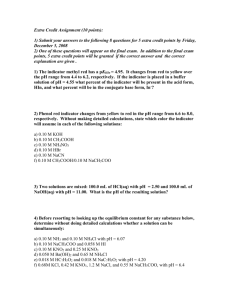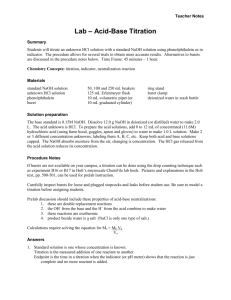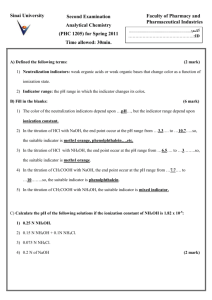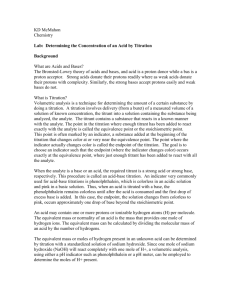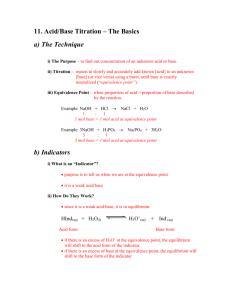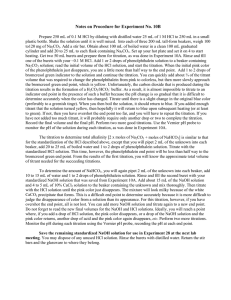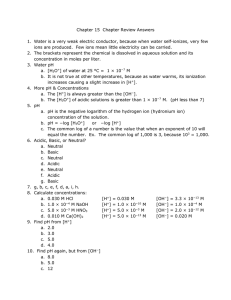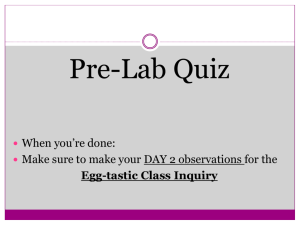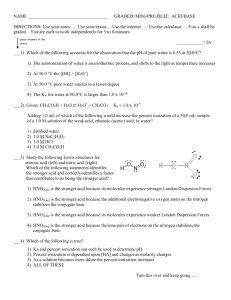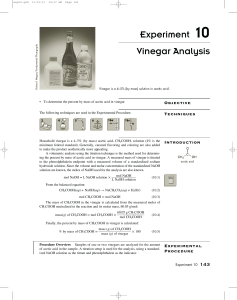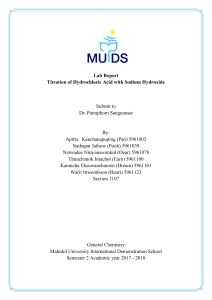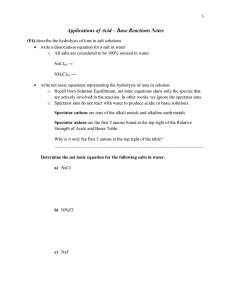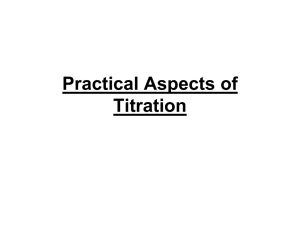Review
advertisement
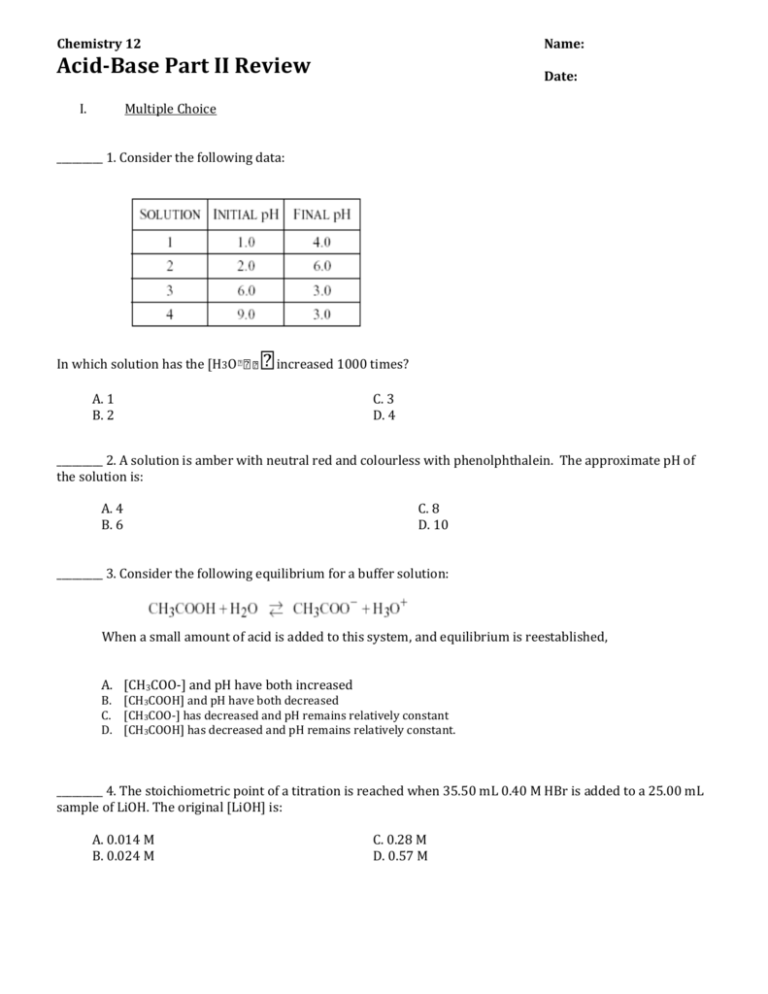
Chemistry 12 Name: Acid-Base Part II Review Date: I. Multiple Choice _________ 1. Consider the following data: In which solution has the [H3O increased 1000 times? A. 1 B. 2 C. 3 D. 4 _________ 2. A solution is amber with neutral red and colourless with phenolphthalein. The approximate pH of the solution is: A. 4 B. 6 C. 8 D. 10 _________ 3. Consider the following equilibrium for a buffer solution: When a small amount of acid is added to this system, and equilibrium is reestablished, A. [CH3COO-] and pH have both increased B. [CH3COOH] and pH have both decreased C. [CH3COO-] has decreased and pH remains relatively constant D. [CH3COOH] has decreased and pH remains relatively constant. _________ 4. The stoichiometric point of a titration is reached when 35.50 mL 0.40 M HBr is added to a 25.00 mL sample of LiOH. The original [LiOH] is: A. 0.014 M B. 0.024 M C. 0.28 M D. 0.57 M _________ 5. A basic buffer solution can be prepared by mixing equal numbers of moles of: A. B. C. D. NH4Cl and HCl NaCl and NaOH Na2CO3 and NaHCO3 NaCH3COO and CH3COOH _________6. Which of the following, when dissolved in water, produces a basic solution? A. KCl B. NaClO4 C. Na2CO3 D. NH4NO3 _________ 7. The net ionic equation for the hydrolysis of Na2CO3 is _________ 8. When 1.0 M NH3 is titrated with 1.0 M HCl, the most suitable indicator is: A. methyl violet. B. indigo carmine. C. phenolphthalein. D. bromcresol green. _________ 9. All buffer solutions are able to A. maintain pH at 7.00. B. neutralize acidic solutions only. C. maintain a relatively constant pH. _________ 10. The most appropriate indicator for the titration of 0.50 M CH3COOH with 0.50 M NaOH is A) B) C) D) methyl red. indigo carmine. phenolphthalein. bromcresol green. _________ 11. An indicator is useful for a titration when its Ka is close to A) B) C) D) K w / Kb the pH at the equivalence point. the [H+] at the equivalence point. the concentration of the acid form of the indicator. _________ 12. In order to change the pH of a solution from 2.0 to 4.0 to the [H3O+] must A.) decrease by a factor of 100. B.) decrease by a factor of 2. C.) increase by a factor of 2. D.) increase by a factor of 100. _________ 13. Which of the following represents the predominant reaction between HCO3- and water? A.) B.) C.) D.) _________ 14. Which of the following applies at the transition point for all indicators, HInd ? A.) [HInd] = [Ind-] B.) [H3O+] = [OH-] C.) [Ind-] = [H3O+] D.) [HInd] = [H3O+] _________ 15. Which of the following 1.0M solutions would have a pH greater than 7.00? A.) HCN B.) NH4Cl C.) KNO3 D.) NaCH3COO _________ 16. What is the pH of the solution formed when 0.040 mol NaOH(s) is added to 2.00 L of 0.020M HCl? A.) 7.00 B.) 1.70 C.) 1.40 D.) 0.00 _________ 17. A buffer solution may contain equal moles of A.) strong acid and its conjugate base. B.) weak acid and strong base. C.) weak acid and its conjugate base. D.) strong acid and strong base. I. Problems 1. Determine the pH of a 0.75M solution of Sr(HSO3)2. 2. Consider the salt sodium oxalate (Na2C2O4). When a few drops 1.0M solution of sodium oxalate is added to phenolphthalein indicator the solution turns pink. Write a hydrolysis equation and an equilibrium expression to explain the shift that caused the indicator to change colour. 3. a) Calculate the pH of the solution produced when 9.00 mL of 0.200 M NaOH has been added to 20.0 mL of 0.200 M HCOOH. b) How many mL of NaOH have been added at equivalence point? c) Calculate the pH at the equivalence point of this titration.

